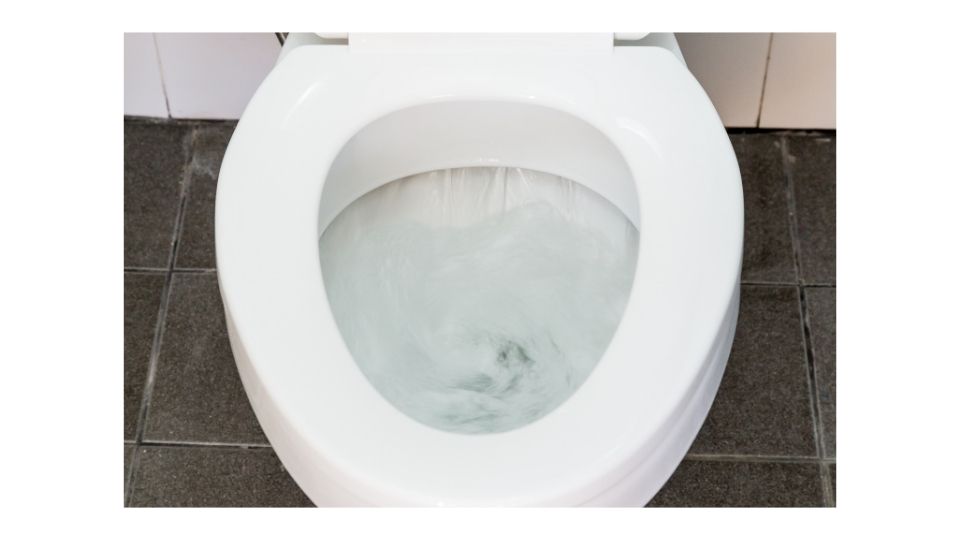A toilet’s job is to suck in water from the bowl, then release it into a pipe that will safely carry it outside. A clog in the pipe or a faulty flapper valve will prevent this from happening. When the water level rises high enough inside of your toilet so that it spills over and runs down the front of your porcelain throne, you know there is a problem. In this article, we are going to go over the main reasons why a toilet would overflow.
What Causes a Toilet to Overflow
1. Blocked Drain:
The first thing to check for is a clogged toilet drain. If you flush the toilet and water won’t come out, then you know there is a clog somewhere in the drain. The most commonplace for a toilet drain to clog is in the fitting that connects it to your house’s water supply. When this happens, all of the water that comes into your house from your well through this pipe will create a blockage.
2. Bad Flapper Valve:
The second most common cause of a toilet overflowing is a clogged flapper valve. When this happens, the water that has been in your toilet for so long begins to stagnate until the flapper valve opens when someone flushes the toilet. The fact that it overflowed is a sign that you have an old-style of flapper valve or that your flapper is broken.
3. Blocked Drain Outside:
While the first two causes of a toilet overflowing mainly happen inside the house, this one is likely to be causing a clog in the exterior drain. Find out how to fix this problem by reading our article on fixing a clogged toilet drain.
4. Flapper valve not working:
If your toilet looks like it’s been leaking for years, it’s time to pick up the phone and call a plumber. It’s rare for the flapper valve to stop working suddenly- it’s usually a slow process where each time you use your toilet, water leaks out all over the floor.
5. Broken toilet flush handle:
While not as common as the previous causes of a toilet overflowing, this is still something you should look into. The handle connected to the flapper valve on your toilet might be broken if it started to leak water all over your bathroom and someone accidentally broke it off during cleanup.
6. A clogged toilet:
The last cause of a toilet overflowing is a clogged toilet. This is the rarest cause of a toilet overflowing because it’s usually caused by germs. However, if you use your toilet regularly- sometimes for days at a time- and it begins to overflow, chances are that you have something in there that needs to be removed.
How to stop a toilet from overflowing
If you have a clogged toilet, you know what a major inconvenience it can be. Not only will it cause the toilet to constantly run, but it can also foul up your bathroom. Clogs are not only an annoyance, but they are also a health hazard because of the bacteria and germs that gather and spread from an overflowing toilet bowl. If you’ve found yourself in this situation before, we’ve put together this easy guide on how to unclog a toilet.
1. start with the easy stuff
The first thing you’re going to want to do when you find yourself dealing with a clogged toilet is to start taking care of some of the easy issues that are likely causing it. For starters, make sure none of your other plumbing fixtures are leaking. If they are, take care of them as quickly as possible. The last thing you want is for a leaking faucet or showerhead to mix with your overflowing toilet and create an even worse problem.
2. Pour some baking soda
The next thing you’re going to want to do is to pour some baking soda into the toilet bowl. After you’ve done that, flush your toilet and let the baking soda sit in the bowl for a few minutes. After a few minutes, pour a little bit of vinegar into the bowl and let it sit for a couple more minutes. At this point, you should see bubbles starting to form near whichever part of your toilet is clogged.
3. Flush Again
Pour more baking soda into the bowl and flush the toilet. If you’ve followed these steps correctly, you should see a string of bubbles in the toilet bowl. At this point, you can either pour a little bit of vinegar into the bowl or shake some hair spray in there to make sure it does not get any thicker. Either way is fine and should be safe for your toilet. Let the hair spray sit for a few minutes and then start flushing again if you are using it.
Conclusion:
Having an overflowing toilet is never fun and can be a very expensive repair. What causes a toilet to overflow, however, is avoidable with the right tools and information at your disposal. By following these tips, you can keep your toilet from overflowing and save yourself from an expensive repair bill.

Arthur C. Jackson is the resident handyman and toilet expert for BestToiletGuides.com. Drawing from his experience, he tends to focus on how he can help the consumer.

